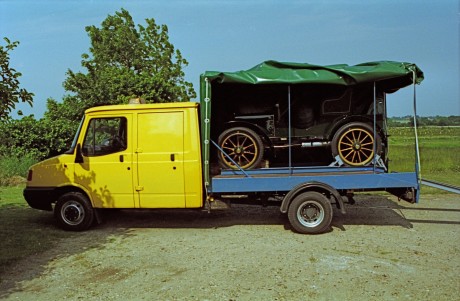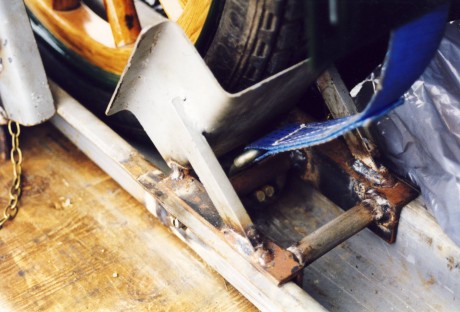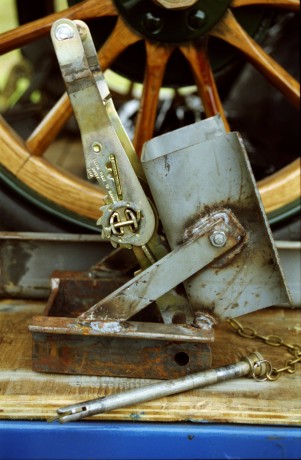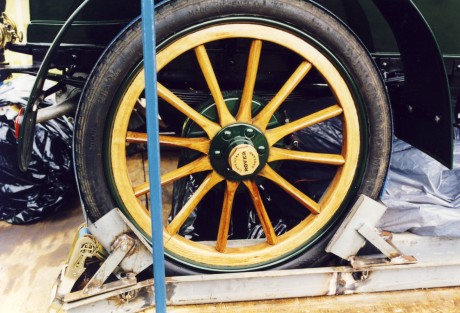Transporting early, light cars
Saturday, March 20th, 2010This shows my method of strapping a veteran car to a trailer or transporter without risking damage to axles, wheels or paintwork.
Over the years I have observed the damage that is sometimes caused by the fretting of straps against wooden artillery wheels. On two occasions I have seen structural damage to axles and to track control rods. I have seen cars with two straps on the front axle pulling forward and down and two straps on the rear axle pulling back and down, probably exerting a considerable force which the axles were never meant to take. My method of securing a vehicle to its trailer or transporter uses channels to guide the car onto the transport, positioning the vehicle correctly and preventing it from slipping sideways, it also puts no undue strain on any part.
When the vehicle is loaded the front wheels run up against a stop. The front chock, which has a ratchet strap attached, is then put into position on each of the rear wheels and secured with a pin through the channel. The rear chock, which has a ratchet mechanism from a standard ratchet strap attached to it, is then put into position and again secured with a pin through the channel. The rear chocks differ from the front chocks in that they can pivot around the pin. Finally the strap is put over the top of the wheel and tightened up.
As the strap is tightened the rear chock pivots, forcing the wheel hard against the front chock. At the same time the wheel is pulled down tight into the channel. The tyre is then being securely held over a large part of its circumference, rather like a brake band. This avoids putting any strain on the axles, the car is free to ride on its own springs. There is no need for chocks on the front wheels, the channels, stops and the winch cable hold the car perfectly well. In the picture above you can see the toggle that prevents the pin slipping out during transit. The car has been transported in this manner for several years and around 50 00 miles.
I originally thought that, in the event of a flat wheel, the wheel would cease to be held tightly between the chocks, but experience showed me otherwise. I have seen a similar method using a loop and a strap over the tyre but this can easily exert a sideways force on the wheel which is not good for an artillery wheel.



